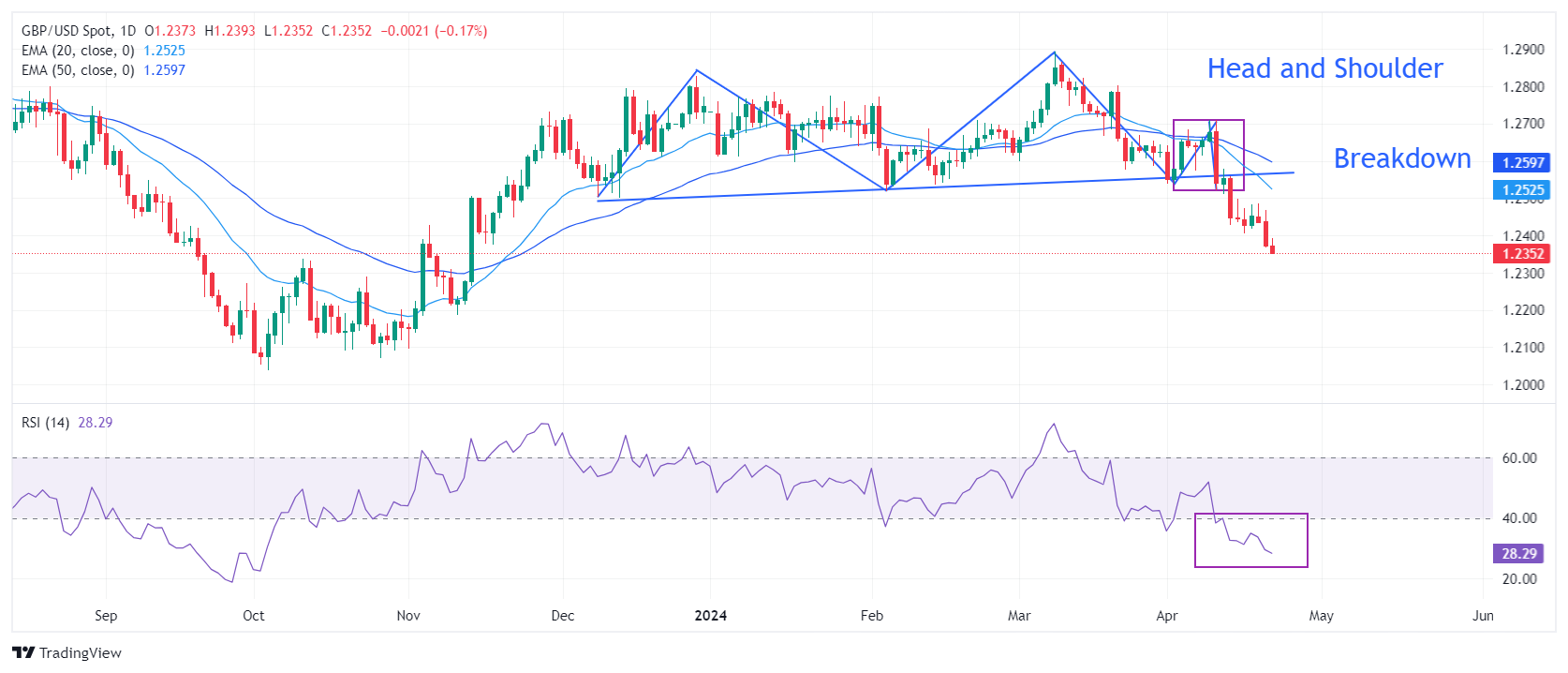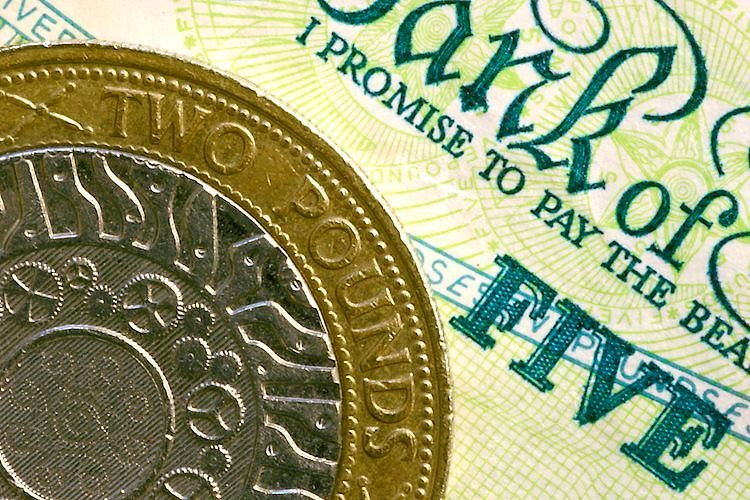- The Pound Sterling faces selling pressure as the soft inflation outlook prompts BoE rate cut prospects.
- Weak UK Retail Sales also contribute to a softer inflation outlook.
- Fed’s higher for longer interest-rates argument strengthens the US Dollar.
The Pound Sterling (GBP) remains on the back foot in Monday’s early American session as investors continue to price in the Bank of England (BoE) will pivot to interest-rate cuts earlier than the US Federal Reserve (Fed). The GBP/USD pair trades close to a five-month low around 1.2360 as investors expect the Fed will keep its monetary policy framework restrictive for longer. A strong economic outlook and robust consumer spending in the United States are keeping inflation higher.
The US Dollar Index (DXY), which tracks the US Dollar’s value against six major currencies, trades broadly steady near the crucial support of 106.00. This week, the US Dollar will be guided by the core Personal Consumption Expenditure Price Index (PCE) data for March, which will influence Fed rate cut expectations. Currently, financial markets anticipate that the Fed will begin reducing borrowing rates in September.
Meanwhile, easing fears of further escalation in tensions between Israel and Iran could offer some support to risk-sensitive assets. Iran said they have no plans for an immediate retaliation, according to Al Jazeera.
Daily digest market movers: Pound Sterling weakens while US Dollar moves higher
- The Pound Sterling finds temporary support near 1.2360 after retreating from 1.2470. More downside remains likely after comments from Bank of England Deputy Governor Dave Ramsden on Friday, who said that upside risks to inflation have receded and that price growth could undershoot the central bank’s recent projections.
- Ramsden said “Over the last few months I have become more confident in the evidence that risks to persistence in domestic inflation pressures are receding, helped by improved inflation dynamics,” Reuters reported. However, he warned that unlike the United States the backdrop to inflation in Britain was of continuing weak economic growth.
- Strong prospects for UK inflation easing sooner and a downbeat economic outlook are expected to allow the BoE to start reducing interest rates earlier than previously anticipated. Friday’s dovish comments from BoE Deputy Governor Dave Ramsden echo through the market, and traders raise the probability of a June rate cut near 60%, Reuters reported.
- The prospects for inflation easing further were also boosted by weak Retail Sales data for March. The Office for National Statistics (ONS) showed Friday that Retail Sales were unchanged in March compared with the previous month and below the 0.3% increase forecast by economists. In February, Retail Sales grew by a meagre 0.1%. The Retail Sales data is a leading indicator of consumer spending, so weak figures signal the deepening cost-of-living crisis due to higher interest rates by the central bank.
- Going forward, the Pound Sterling will dance to the tunes of the S&P Global/CIPS preliminary PMI data for April, which will be published on Tuesday. The Manufacturing PMI is expected to expand steadily by 50.3. The Services PMI is estimated to have declined slightly to 53.0 from 53.1.
Technical Analysis: Pound Sterling drops to near 1.2300

The Pound Sterling resumes its downside journey after failing to recapture the crucial resistance of 1.2400. The GBP/USD pair weakens after a breakdown of the Head and Shoulder chart pattern, whose neckline is plotted from the December 8 low around 1.2500. Declining 20-day and 50-day Exponential Moving Averages (EMAs) at 1.2525 and 1.2600, respectively, indicate that the long-term outlook is bearish.
The 14-period Relative Strength Index (RSI) oscillates in the range of 20.00-40.00, indicating a strong bearish momentum.

























